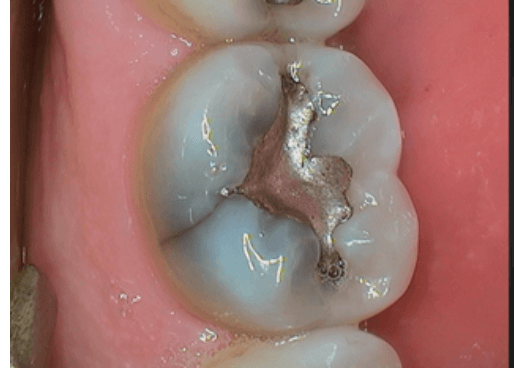Broken & Fractured Teeth
Back to: Clinical Team Procedures
Condition: Broken Cusps
All posterior teeth with broken cusps need crowns for the best long-term solution. If the patient refuses the recommended treatment of a crown for any reason it is up to the provider to decide if they are comfortable placing a large resin filling as a long-term temporary solution. It should be made clear to the patient that if they choose this option we will not warranty the composite, whereas we would the crown. This is true anytime the patient is requesting a lesser treatment than what is recommended. Documentation of this compromised solution is of the utmost importance. This includes intra-oral pictures, and xrays
What are the disadvantages of a temporary solution such as a very large resin restoration?
- First, we would like to restore teeth with as little trauma as possible. Drilling into a tooth multiple times will eventually lead to the pulp becoming inflamed and dying and the need for root canal treatment.
- Second, a tooth not restored ideally can break again and often break in a way that now makes the tooth non restorable. These are conversations that need to be had with the patient when considering compromised care.
- Third, often times the overall cost will be great when considering a temporary solution and then a more permanent solution in a few years compared to simply fixing the tooth the right way from the start.
- Fourth, recurrent decay is common in large build-ups without a crown due to poor seal of filling material around gum area, non-ideal contours, food impaction, poor cleansibility.
All these examples shared below are cases where build ups and crowns are indicated. Don’t forget to treatment plan for possible root canal therapy when indicated




CONDITION: Fractures in Marginal Ridges
As a general rule we do not recommend treatment for minor fractures in marginal ridges if the patient is asymptomatic. Ideally the most proactive treatment is a protective occlusal guard.
Fractured marginal ridges can be restored in 2 ways, via direct filling or via crown. As a general rule if the isthmus of the tooth is more than ½ of the occlusal table or if the proximal contact will be very difficult to restore with resin then we would recommend a crown. If a tooth is symptomatic to biting then “cracked tooth syndrome” is the diagnosis and the treatment plan is a crown. Listen to the patient! If the tooth is sensitive it is quite likely to need a root canal too! It’s extremely rare for a sensitive tooth to be fixed by a crown without a root canal. When in doubt temporarily cement the crown and see if symptoms persist for a week or two.
No matter how small the current restoration, with cracked tooth syndrome, full occlusal coverage is indicated
Always treatment plan possible root canal therapy is patient presents with symptoms Remember worse case scenario!



